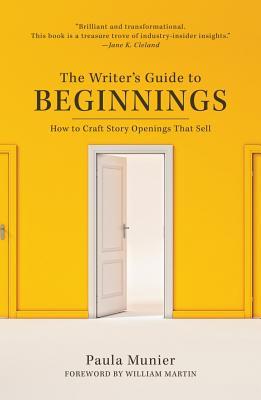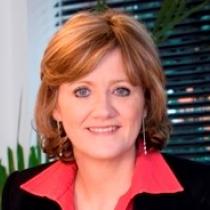Pinned 5 years 6 months ago onto Writing Guides

The Writer’s Guide to Beginnings: How to craft story openings that sell by Paula Munier is an excellent writing guide to help both new writers and established authors to ensure their story kicks off with all the right story elements.
Paula starts her fantastic writer's guide with inspiration: The most important truth of all ~ you probably have more talent that you think. Anyone willing to sit at a desk, deny distractions, and write until you’re numb, will already have one of the most important components of talent: The discipline to draw a story out of yourself.
Paula talks about big ideas, grand arcs and how important the three-act structure is to every story, but the whole book concentrates on the beginning of your story. The DNA of you as a writer and of your novel exists in the first few sentences and pages, and in the expectations and questions they raise in the reader and the answers they show about you the writer and your ability to pack in the 6 Ps onto your pages? Personality, punch, plot, place, pace and promise.
Who is telling the story?
Not you, which character is telling your story. In other words, which character that you have created will be sharing their side of the story.
Paula says first-person point of view demands a strong voice and as such is often the choice for writers with a strong voice. To do this make sure your character engages the reader’s symphony and find themselves in situations that command the reader’s attention. The best stories are roller-coasters of emotion for the reader, who hopes to be soothed and scared, enlightened and becalmed, embraced and spurned, reassured and unnerved, saddened and maddened, gladdened and ultimately moved.
As writers, we need to identify the emotion we need to invoke in our readers in our first words. Evoke that emotion successfully and you have engaged your readers and the pull of that emotion will compel them onto the next page, and the next and the next. There is lots more advice here for creating character emotions.
Why should readers care about what happens next? This is a big and complicated question because it must cover: the action happening as the story opens, the premise of the story and the big idea of the story itself.
Writing Jump-Start
Paula suggests that you take a look at the first 250 words of your story. Examine it in the light of the story engine.
Something happens to someone: what happens in your story? To whom? That someone reacts: what does that someone do?
The reader reacts: how does the reader react? Are you sure they react that way? Give the opening to a few readers and then ask them how they feel about what they’ve read. Did they react the way you intended?
In this scene, ask yourself:
- What is the conflict that drives the scene?
- How does the conflict echo the main story question?
- Can you break down the scene into beginning, middle and end?
- How does each relate to the others?
- As a rule, don’t have three to six characters in your opening pages. Begin with fewer characters and give them more to do.
Beginnings By Genre
Paula gives pages of advice on genre beginnings. Each genre is listed with several dos and don’t’s under each so that writers can ensure their story hits the marks of the genre and avoid clichés that will doom your work from being published.
This is a fantastic guide for helping you to create a compelling beginning to your story! Grab a copy now!
We’ve all wanted to fall in love at first sight, at least once in our lives. As writers, we can give our readers this emotional journey again and again. Read this excellent writing guide to find out how you can do this in your novels!


























